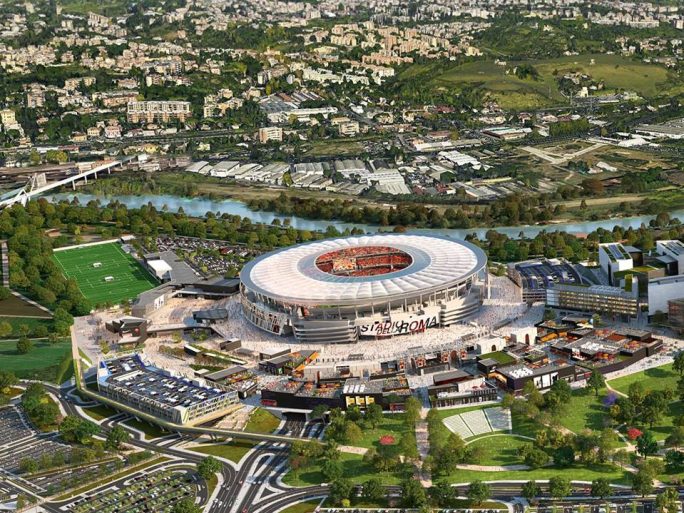AS Roma Seeks Technological Revolution In Bid To Become Football Superpower

Roma Chairman Jim Pallotta has started a tech revolution at the club to make it a European superpower and to deliver a state of the art stadium – but not VR
In England, the overwhelming majority of stadiums are owned by the clubs themselves (West Ham’s tenancy at the Olympic Stadium is a notable exception), but in Italy the venues are rented from local authorities. This means there is a lack of control over commercial revenue, construction and what the stadium can be used for.
This, coupled with the fact that many – some of which were built or renovated for the 1990 World Cup – have an athletics track around the pitch, means Italian stadiums are far behind those seen in the Premier League.
Juventus left the Stadio delle Alpi in 2006 after just 16 years for these reasons and moved to the modern, smaller Juventus Stadium. And now Rome is leaving its home since 1959 – the Stadio Olimpico – for similar reasons.
“The only way I think you can become a global brand is to have your own stadium,” said Pallotta. “If you are trying to compete against Real Madrid, Juventus or the Premier League … it’s really difficult [otherwise].”
![]()
The New Coliseum
Roma’s new stadium comprises not just a football arena, but also an entertainment district and office park. And technology will play an integral role when the ground opens in time for the 2020-21 season.
Pallotta and his team have learnt lessons from the new arenas being built in the US, where stadium technology is still more advanced, and in Europe, which is catching up.
“What we want is to make sure is that we don’t build technology for technology’s sake. We’ve seen mistakes in other stadiums,” he explained.
“When we looked at other stadiums we could see those mistakes. One of the reasons they made certain deals with vendors was because of sponsorship revenue. [There were] Wi-Fi systems didn’t make sense.”
Pallotta, along with his CTO and commercial team, created a grid with more than 100 variables to narrow down the best suppliers for each category. Once each category had been narrowed down to two or three vendors, Roma then decided on the best balance of technology and commercial interests.
“We tried to find the best solutions for everything from payment systems to electrics,” he added. “Everything we do doesn’t have to be bleeding edge but we need to have an open architecture so if we upgrade it’s plug and play.
“Wi-Fi is changing all the time. What we looked at three years ago is massively different from now.”
Mobile ticketing and facial recognition are another two areas that Pallotta is looking to push. He said the club paid for high-definition CCTV cameras at the Stadio Oimpico – even though they were tenants – because police had difficulty identifying offenders.
At the new campus, facial recognition will be used to help security, and also to ensure that fans trying to enter the ground are the true owners of the tickets they are using.
“I give away my Boston Celtics tickets to friends all the time,” said Pallotta. “In Italy you just can’t do that.”
![]()
Tech for tech’s sake
Pallotta has an interest in eSports venture Fnatic, and believes the future is bright for the sector, but is not convinced by everything, especially virtual reality (VR) – at least not yet.
Several sports organisations, broadcasters, and technology vendors are betting on VR as a way of giving armchair supporters the ‘next best thing to being there’, but Pallota thinks there is some way to go.
“I know sometimes people get excited by the hype when [the technology] is not really there. For example, during the dotcom bubble you really needed the infrastructure built in the mid-2000s by the likes of Amazon to take full advantage.
“VR is nice, but it’s not suitable for today in a stadium. It will come and it will be great, but it’s version 1.0 and 2.0. But you need version 3.0 and 4.0 … and at some point it’s going to be massive.”